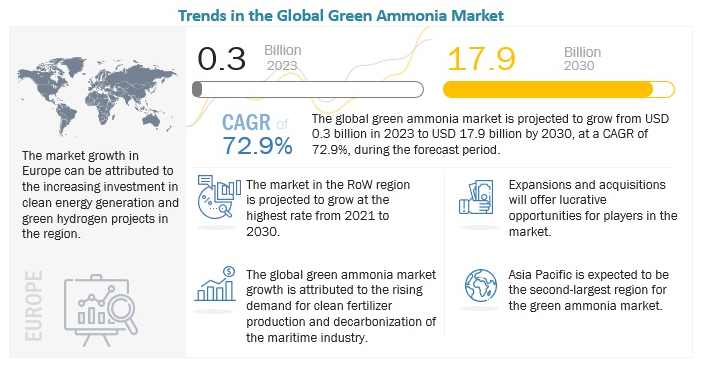Green Ammonia Fuel – The Fuel of the Future?
Source: IEEE Spectrum
09 August 2023 – by Eric Koons
The world is increasingly shifting towards sustainable energy solutions, with green ammonia fuel gaining popularity. The growing challenges of climate change, greenhouse gas emissions and increasingly dire warnings drive this shift away from fossil fuels.
“The problem is not simply fossil fuel emissions. It’s fossil fuels – period. The solution is clear: The world must phase out fossil fuels in a just and equitable way – moving to leave oil, coal and gas in the ground.”
– António Guterres, Secretary General of the United Nations
Ammonia is a well-known chemical compound with a traditionally energy-intensive production process that heavily relies on fossil fuels. However, green ammonia offers an alternative approach that can revolutionise various industries and pave the way towards a more sustainable future.
Understanding Green Ammonia Fuel
Ammonia (NH3) consists of one nitrogen atom and three hydrogen atoms. It has various applications, with 70% as an ingredient in fertilisers and the remaining 30% going towards industrial applications like producing plastics, refrigerants and explosives.
Haber-Bosch Process
Traditionally, ammonia production relies on the Haber-Bosch process, which combines nitrogen gas from the air with hydrogen gas derived from natural gas to produce ammonia. Unfortunately, this process emits significant carbon dioxide, contributing to 1.3% of global carbon emissions and consuming 2% of the global energy supply.
Green Ammonia Production Using Renewable Energy Sources
On the other hand, green ammonia production is a sustainable, low-carbon approach. The ammonia is synthesised through a process known as “electrolysis”. This method of green ammonia technology uses renewable power sources, such as wind, solar or hydroelectric power, to generate renewable electricity and then split water into hydrogen and oxygen.

The hydrogen is combined with nitrogen extracted from the air through an air separation unit, resulting in green ammonia. Green ammonia can then be used as fuel by direct combustion or in ammonia fuel cells.
Is Green Ammonia a Viable Fuel?
In its current state, green ammonia is not a viable fuel. However, with the proper support, it may be.
The debate on green ammonia fuel’s viability requires a careful look at both the pros and cons of the energy source. Additionally, it largely hinges on future research, development and global trends.
The Argument for – Pros
When looking at just its physical characteristics, green ammonia looks viable. It is an energy-dense, carbon-free alternative for traditionally fossil fuel-reliant industries. As a result, leading international organisations and governments see it as a potentially valuable component in global decarbonisation strategies.

Furthermore, it makes an excellent energy carrier, enabling efficient storage and transportation, thus addressing the intermittency issues often associated with renewable energy sources.
Moreover, green ammonia’s versatility allows its use in fuel cells to generate electricity or as a clean substitute for conventional fuels in transportation, industrial processes and power generation.
The Argument Against – Cons
However, with economic considerations, its viability comes into question – with the primary constraints being cost and scalability. These are common issues for many new fuels, requiring a significant buy-in from governments, investors and the public.
Green ammonia fuel must become cost-competitive with existing energy options and have a large enough consumer base to support its growth.
Currently, sustainable ammonia production costs are significantly higher than traditional methods. Additionally, building the necessary infrastructure for the efficient storage, transportation and distribution of green ammonia on a global scale requires significant investment and careful planning.
The Path to Viability
Overcoming these hurdles is vital to make green ammonia a cost-effective and widely adopted fuel. The IEA has developed a roadmap with steps to put the technology firmly in the “viable” category.
The world will need to invest USD 14 billion annually until 2050 into research, electrolyser construction and transmission infrastructure.
Green Ammonia Investment Is Growing
In this pursuit, governments and the private green ammonia sector are increasing investment in the technology. This is creating rapid growth in new project announcements and permitting.
The following green ammonia projects are some examples:
- The world’s first dynamic green ammonia production facility is under development in Denmark. It will take wind energy generated onsite to directly power its electrolysers and will be online as early as 2024.
- The UAE is building a USD 1 billion production facility that will connect to a nearby solar power plant and produce 200,000 tonnes of green ammonia.
- The largest fertiliser company in Brazil (Unigel) has started construction on an integrated green ammonia plant with 60,000 tonnes in annual capacity.
- The German government is partnering with private companies to build a green ammonia import terminal in Hamburg to receive imports from Saudi Arabia.

As of 2022, the green ammonia market was worth USD 300 million, yet estimates predict a compound annual growth rate (CAGR) of over 70% until 2030 to a value of USD 17.9 billion.
Future of Ammonia as a Fuel
The current global investment in green ammonia fuel is a positive sign, reflecting the increasing interest and recognition of its potential.
Governments, private investors and research institutions are allocating resources to explore and develop green ammonia production technologies. This investment is driving innovation, improving efficiency and reducing costs and is important for a hydrogen economy.
However, it is crucial to recognise that green ammonia is still in its nascent stages, and several challenges need to be addressed before it can become viable at scale.
Developing green ammonia into a mature and economically feasible technology will take time, effort and continued commitment.
by Eric Koons
Eric is a passionate environmental advocate that believes renewable energy is a key piece in meeting the world’s growing energy demands. He received an environmental science degree from the University of California and has worked to promote environmentally and socially sustainable practices since. Eric’s expertise extends across the environmental field, yet he maintains a strong focus on renewable energy. His work has been featured by leading environmental organizations, such as World Resources Institute and Hitachi ABB Power Grids.
Read more


